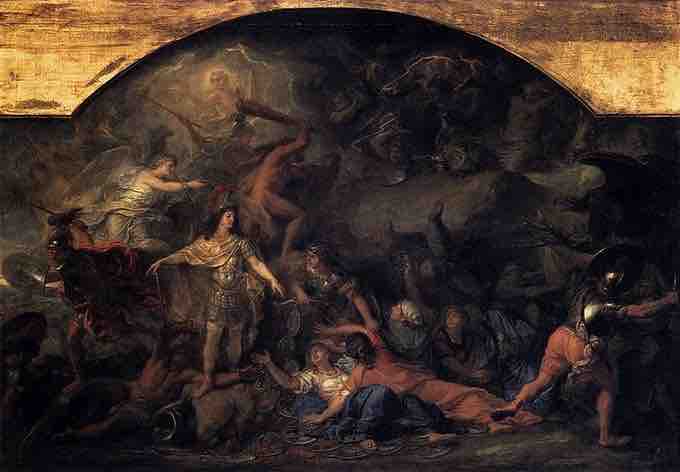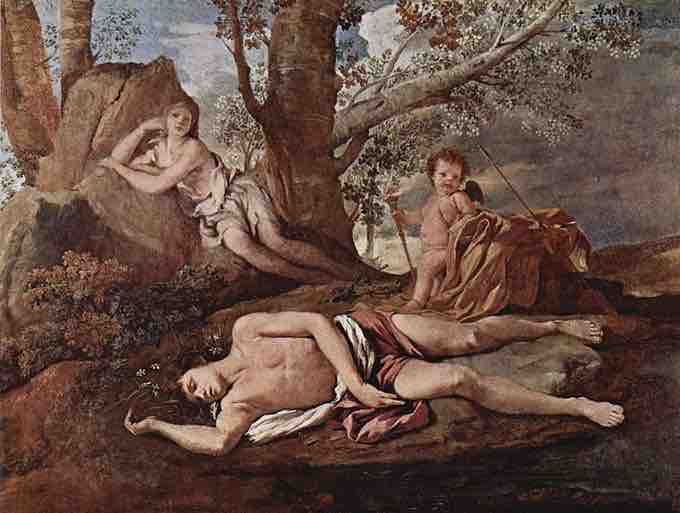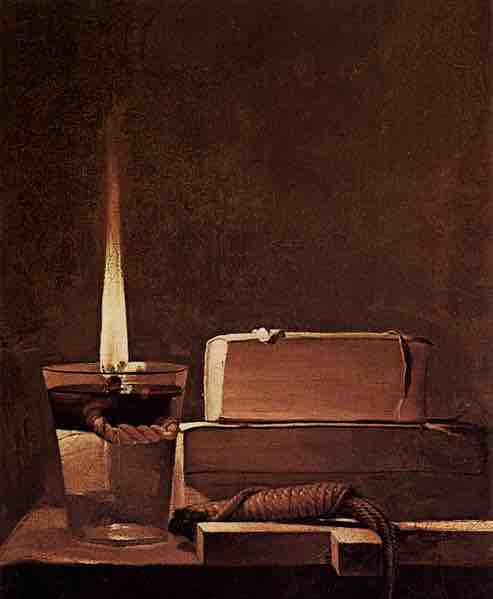Overview: The Baroque Era in France
17th century painting in France was influenced by Italian Baroque sensibilities as well as the Classical tastes of the powerful monarchy. These two strong influences resulted in a style that was unique to France and culminated in the art produced for King Louis XIV. The reign of Louis XIV saw a shift from Mannerist and Baroque styles popular in the early part of the century, during the reign of Louis XIII, toward a more prescribed Classical style. Louis XIV established royal control over artisanal production in France, prohibiting the purchase of luxury goods from abroad. He also established the Academy of Painting and Sculpture, which maintained a hierarchy of genres in painting and a distinctly Classical flavor.
Influential French Painters
Important painters of 17th century France include Simon Vouet, Charles Le Brun, Nicolas Poussin, Claude Lorrain, and Georges de la Tour. 17th century painting in France was divided: on one hand there was influence from the Italian Baroque style as seen in the work of de la Tour; on the other was a distinctive turn towards a rigid, Classical style that was favored by the monarchy, and exemplified by the works of Le Brun, Poussin, and Lorrain. The convergence of these two styles gave 17th century painting an aesthetic tone that was wholly unique to France.
Simon Vouet and Charles Le Brun
Simon Vouet is known for introducing Baroque style painting to France. He studied in Italy and learned the techniques of the Italian masters, which he imbued with his own sensibilities. He was made "premier peintre du Roi" by Louis XIII, who commissioned numerous works from him. Charles Le Brun was Vouet's most influential pupil and was to become an important painter in the court of King Louis XIV. Le Brun worked primarily for Louis XIV, and his most important works reside at the Palace of Versailles. Mostly producing battle pieces and altarpieces, Le Brun's paintings exemplify a synthesis of Baroque and Classical styles.

Charles Le Brun, The Conquest of Franche-Comté
Charles Le Brun worked primarily for King Louis XIV, and his most important works reside at the Palace of Versailles. Mostly producing battle pieces and altarpieces, Le Brun's paintings exemplify a synthesis of Baroque and Classical styles.
Nicolas Poussin and Claude Lorrain
Nicolas Poussin is known for his Classical style paintings created in 17th century France. His work features clarity, logic, order, and clean lines over color, serving as a counterpoint to Baroque style painting. He spent most of his life working in Rome and became a favorite painter of King Louis XIV. Claude Lorrain is known particularly for his work in landscape paintings. He earned the patronage of Pope Urban VIII, after which his fame grew rapidly. Lorrain and Poussin were friends and were known to have traveled the Italian countryside together.

Nicolas Poussin, Echo and Narcissus
Nicolas Poussin is known for his Classical style paintings created in 17th century France. His work features clarity, logic, order, and clean lines over color.
Georges de la Tour
Georges de la Tour was a French Baroque painter known for painting religious chiaroscuro scenes lit by candlelight. His work shows a great deal of influence from Caravaggio, characterized by the painted effects of light and dark, but is unique in that he applies this technique to genre subjects.
